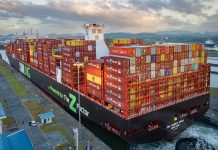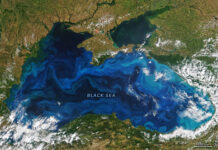
China and the United States remained Valenciaport’s principal trading partners in 2024, accounting for 34% of its total traffic. China maintained its leading position, with 702,633 containers handled and 7,912,389 tonnes of goods transported. The United States followed with 368,298 TEUs and 4,524,697 tonnes exchanged.
These figures were presented to the Board of Directors of the Port Authority of València (PAV) during their first meeting of the year, held at the Clock Building. The report detailed that key exports from Valencia to China included food products, automobiles and their components, wines and beverages, construction materials, paper, and chemicals. Imports from China primarily consisted of machinery and tools, construction materials, vehicles and their parts, chemical products, tobacco, cocoa, coffee, and spices.
In trade with the United States, the primary exports were construction materials, machinery and tools, food, wines and beverages, and chemicals. Imports from North America included paper, fresh products, chemicals, and automobiles and their components.
Significant growth in freight tonnage was noted for Saudi Arabia (+59.6%) and Ukraine (+44%). Algeria and Turkey also saw substantial traffic increases, with growth rates of 24.9% and 23.7%, respectively, while trade with Israel rose by 25.2%.
According to the Statistical Bulletin of the PAV for 2024, a total of 80.7 million tonnes of goods passed through the Spanish port, reflecting a 5.1% increase compared to 2023. The volume of containers reached 5,475,773 TEUs, representing a 14.2% growth. While export cargo traffic remained stable, imports grew by 10.6%, and transit traffic surged by 18.8%.
By sector, iron and steel, as well as construction materials, maintained traffic levels similar to 2023. Notable increases were seen in non-metallic minerals (+33.1%), fertilizers (+4.2%), chemicals (+9%), and agricultural, livestock, and food products (+2.5%). However, the energy sector experienced a sharp decline of 40.4%.
Rail transport saw a decrease of 3.3% in the number of containers moved, with only 6.7% of total goods at Valenciaport transported by rail. In contrast, ro-ro traffic (roll-on/roll-off maritime services) grew by 3.4% in tonnes and 13.7% in containers. Intermodal transport units (IULs) increased by 4.5%. Despite this growth, car traffic declined, with 579,401 vehicles moving through the port, representing a decrease of 9.9% compared to 2023.





